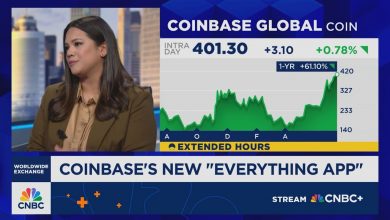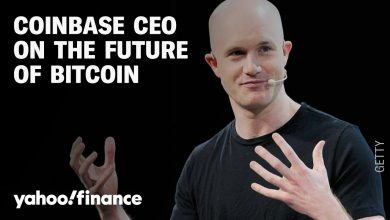 The global financial system stands at a historic crossroads, poised for a transformation that could redefine how value is created, transferred, and trusted worldwide.
The global financial system stands at a historic crossroads, poised for a transformation that could redefine how value is created, transferred, and trusted worldwide.
At the forefront of this revolution is Chainlink Co-Founder Sergey Nazarov, whose vision for a blockchain-based financial system—dubbed “United States Financial System 3.0″—is gaining traction as a blueprint for American leadership in the emerging Web3 economy.
With the recent passage of the GENIUS Act, a landmark piece of legislation providing regulatory clarity for stablecoins and digital assets, Nazarov’s ideas are not just theoretical—they’re becoming reality.
The Dawn of Financial System 3.0
In a series of high-profile appearances, including a keynote at the DC Blockchain Summit 2025 and discussions at the White House Digital Asset Summit, Sergey Nazarov has articulated a compelling case for transitioning from the centralized, Web2-based financial systems of today to a decentralized, blockchain-powered Web3 future.
He describes this shift as inevitable, driven not by ideology but by economic necessity. “The decisions that are going to be happening here over the next 18 to 24 months will indeed shape our industry both here in the U.S. and globally,” Nazarov said at the DC Blockchain Summit, emphasizing the urgency of strategic action to maintain U.S. financial dominance.
Nazarov’s vision for Financial System 3.0 rests on three key pillars: asset origination, automation of compliance, and global distribution.
These principles, underpinned by Chainlink’s cutting-edge infrastructure, aim to create a financial ecosystem where tokenized real-world assets (RWAs) become the cornerstone of global markets. The recent passage of the GENIUS Act, which provides legal clarity for stablecoins and enables U.S. banks to custody and issue digital assets, has set the stage for these ideas to flourish.
Pillar 1: Asset Origination—The Rise of Tokenized RWAs
The first step in Nazarov’s framework is to create the world’s most abundant and reliable tokenized assets. Tokenization—the process of representing real-world assets like U.S. Treasury bonds, real estate, or commodities on a blockchain—offers unparalleled transparency and efficiency.
However, Nazarov stresses that for tokenized assets to gain global trust, they must be backed by robust systems like Chainlink’s Proof of Reserve (PoR). This technology provides real-time, verifiable data to ensure that assets, such as stablecoins, are fully backed by their underlying value, eliminating the “trust discount” that currently hinders adoption.
The GENIUS Act amplifies this vision by enabling U.S. banks to issue and custody stablecoins, which Nazarov sees as a catalyst for a “wave of new stablecoins” globally.
“Stablecoin regulation in the US will kick off a wave of new stablecoins… They will all need proof of reserves and cross-chain connectivity,” Nazarov shared on X, highlighting Chainlink’s unique position as the only platform providing both in a single system. By ensuring that tokenized assets are reliable and verifiable, the U.S. can position itself as the global leader in asset origination, attracting capital from around the world.
Pillar 2: Automation of Compliance—Reducing Friction, Enhancing Trust
The second pillar of Financial System 3.0 is automating compliance to reduce transaction costs and ensure regulatory alignment. Chainlink’s Automated Compliance Engine (ACE) is designed to make cross-chain transactions and digital asset custody fully compliant with existing legal frameworks.
This is particularly critical as traditional financial institutions, now empowered by the GENIUS Act, enter the digital asset market. “Many [banks] will need a path to market. Most won’t have internal R&D to build it entirely in-house themselves. This is where Chainlink’s ACE comes in,” noted an X user, echoing Nazarov’s vision of Chainlink as a “compliance gateway” for the new financial system.
Nazarov envisions a future where compliance is not a barrier but an enabler of innovation. By leveraging Chainlink’s infrastructure, including its Cross-Chain Interoperability Protocol (CCIP), financial institutions can seamlessly connect assets across blockchains while maintaining real-time regulatory oversight.
This reduces the friction that Nazarov warns could undermine the U.S.’s ability to attract global demand for its tokenized assets. “If you don’t lower the transaction cost while you do create the best asset, the friction introduced for acquiring that asset will be too high,” he cautioned.
Pillar 3: Global Distribution—Uniting DeFi and Traditional Finance
The final pillar is global distribution, where decentralized finance (DeFi), fintech, and traditional institutions collaborate to channel capital into the U.S. financial system.
Nazarov sees DeFi not as a competitor to traditional finance but as a complementary force that enhances liquidity and accessibility. Chainlink’s CCIP plays a pivotal role here, enabling secure and reliable cross-chain transfers of tokenized assets. This interoperability ensures that assets can move freely across public and private blockchains, creating what Nazarov calls a “global Internet of Contracts.”
The GENIUS Act’s regulatory clarity for stablecoins further accelerates this vision by allowing banks to issue digital assets that can compete globally. Nazarov believes stablecoins, backed by the U.S. dollar and powered by Chainlink’s infrastructure, will maintain the dollar’s dominance in the Web3 economy.
“Stablecoins serve as a distribution mechanism for their respective currencies on a global scale,” he explained, noting that their adoption has reached a tipping point. By fostering collaboration between DeFi, fintech, and institutions, the U.S. can create a financial system that is both highly accessible and economically dominant.
The GENIUS Act: A Catalyst for Change
The passage of the GENIUS Act in 2025 marks a turning point for the U.S. financial system. By providing legal clarity for stablecoins and digital asset custody, the legislation removes longstanding barriers to institutional adoption.
Nazarov has hailed the act as a game-changer, stating that it will “kick off a wave of new stablecoins” that rely on Chainlink’s PoR and CCIP for trust and connectivity. This regulatory framework aligns perfectly with Nazarov’s vision, enabling banks to issue tokenized assets and integrate with blockchain networks without fear of legal ambiguity.
Moreover, the GENIUS Act positions the U.S. to lead the global tokenization race. With Chainlink’s infrastructure already trusted by institutions like J.P. Morgan, Mastercard, and Swift, the U.S. is well-equipped to set the standard for tokenized assets. Collaborations like the recent cross-chain Delivery vs. Payment (DvP) transaction between Chainlink, Kinexys by J.P. Morgan, and Ondo Finance demonstrate the practical impact of this vision.
A Call to Action: Seizing the Web3 Opportunity
Nazarov’s vision for United States Financial System 3.0 is not just about technology—it’s about securing America’s economic future.
He warns that the next 18 to 24 months are critical, as global competitors race to define the Web3 economy. “The Web3 transition is underway, and organizations that adopt strategic approaches will gain tremendous advantages,” he noted. The U.S., with its robust financial infrastructure and innovative spirit, is uniquely positioned to lead this transformation—but only if it acts decisively.
The GENIUS Act is a powerful first step, but collaboration between policymakers, financial institutions, and technology providers like Chainlink is essential.
Nazarov emphasizes the need to work with governments and legal systems to create a unified “golden record” for tokenized assets—a single source of truth that reduces risk and enhances trust. By embracing this vision, the U.S. can not only maintain its financial leadership but also democratize access to high-value assets, making wealth creation more inclusive than ever before.
The Future Is Onchain
As Sergey Nazarov sees it, the future of finance is onchain, and the U.S. has a historic opportunity to shape it. Financial System 3.0 is not a distant dream but a tangible reality, accelerated by the GENIUS Act and powered by Chainlink’s infrastructure. By focusing on asset origination, compliance automation, and global distribution, the U.S. can create a financial system that is transparent, efficient, and resilient—one that unites DeFi and traditional finance in a global Internet of Contracts.
The time to act is now. As Nazarov aptly put it, “The question of whether or not we care about Web3 formatted assets will only accelerate, and the reason for that will not be political, it will be economic.”
With Chainlink’s technology and the GENIUS Act’s regulatory clarity, the United States is poised to lead the world into a new era of finance—one where trust is mathematically guaranteed, and opportunity knows no borders. Let’s embrace this moment and build the future together.



